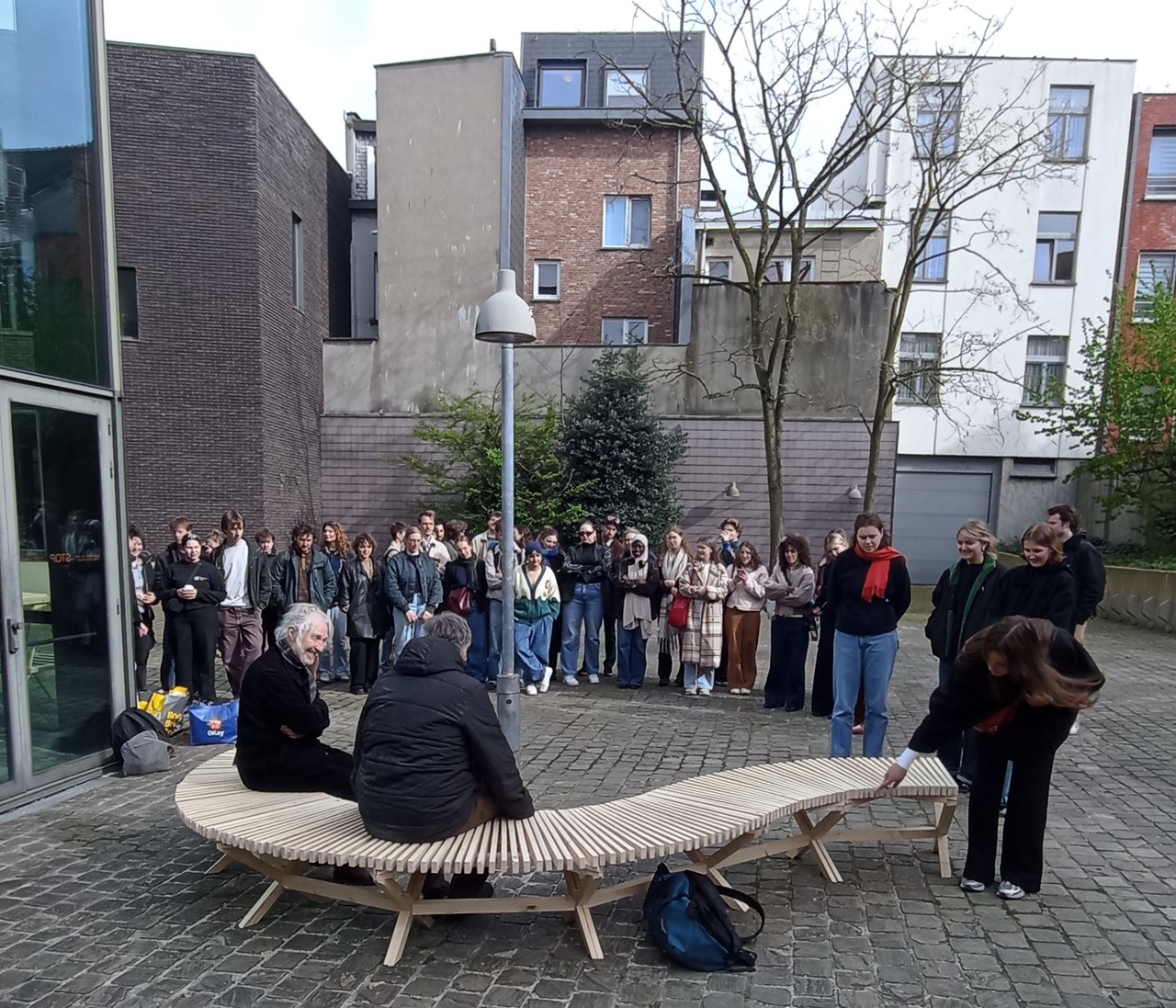It is easy to see that the University of Liechtenstein and the University of Antwerp are not in close proximity to each other. All the more impressive, however, is the fact that craftsmanship is firmly anchored in the architecture curriculum at both universities.
In the run-up to "Maal Week", the 80 or so participating students had already been allocated various specific locations on the campus of the University of Antwerp and in several museums in the city. In a concept phase lasting several weeks, they worked in groups of four to develop a suitable piece of furniture based on a spatial analysis, which was then tested for feasibility as a 1:1 sample. During "Maak Week", which can be translated as "Make Week", the benches specially designed for the museums were then produced. Mario Rinke, professor at the University of Antwerp, and Allessandro Tellini from ETH Zurich designed and implemented the course and supervised the students over the course of a semester.
Every bench is unique; every process a challenge
In addition to spatial criteria, this furniture, some of which was very different, also had to meet other requirements. For example, all benches were made without steel parts, without screws or nails and only from solid wood. The tools required for this were also reduced to the simplest tools such as a chisel, a handsaw or (at least) a cordless drill. For the students, these specifications brought further challenges in terms of the wood joints and the necessary processing steps.
Manual work as a didactic concept
The University of Liechtenstein also has an architecture course with a corresponding focus on craftsmanship. With the "Craft" focus anchored in the curriculum, students are taught material-specific specialist knowledge of basic building materials such as stone, wood and steel. In addition to this, the courses repeatedly involve working in actual size, with real building materials and on a 1:1 scale. What is a time-consuming and material-intensive way of working in the classroom brings great added value to architecture studies in particular. In addition to the ability to express themselves creatively, students are taught an awareness and sensitization for building materials and the associated working processes.
Training sets the course for the profession
What does it mean to want to produce a construction "flush"? How can a timber connection be designed to be aesthetic, functional and load-bearing? What skills and professions are required to implement a project?
While these questions can only be answered to a limited extent in everyday office life, they still have a central influence on the feasibility and the associated costs of a construction process. As part of teaching formats such as "Maak Week" or the "Craft" studio at the University of Liechtenstein, students are confronted with both the design and production process. The consequences of their own design ultimately influence the success or failure of a design. Whether the bench lasts in the end, whether it is comfortable and whether visitors actually like it thus becomes a central question in the work process.
Lifelong learning in teaching too
This mobility gave Livia and Wolfgang numerous insights into the didactic concept, the teaching and learning process and also the perspectives of the students and teachers. The insights gained during the 'Maak Week' will thus be taken up and incorporated as a direct enrichment for teaching at the University of Liechtenstein. Many thanks go to the University of Antwerp, to Prof. Mario Rinke and Allessandro Tellini for their insights and to the University of Liechtenstein for making this joint work possible.
